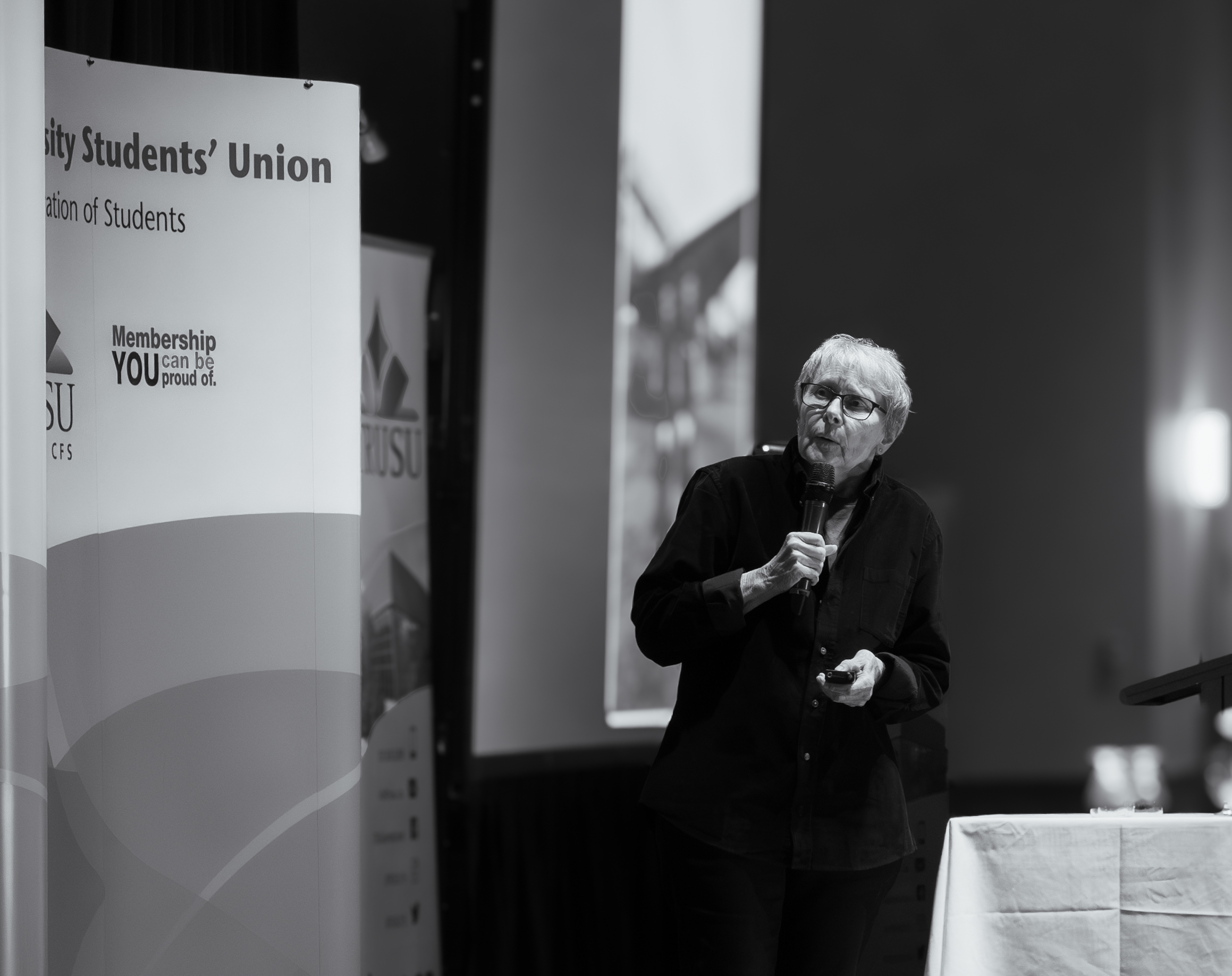Dr. Roberta Bondar shifted perspectives beyond the familiar when she spoke at a TRUSU Common Voices guest lecture on Feb. 29. Bondar was Canada’s first female astronaut and the first neurologist in space. She was also named to the Order of Canada, among other accomplishments.
Her talk, Perspective Shift: Moving Beyond the Familiar to Reach for the Extraordinary, explored a combination of connections between disciplines. Bondar began by advocating for the integration of art and science, favouring STEAM (Science, Technology, Engineering, Arts and Mathematics) instead of STEM.
She asked the audience to consider, “Who could I be?” Bondar proceeded to outline a process for pursuing goals based on their answer. Ambition begins with inspiration and aspiration. Those sparks guide our plans and strategies. Execution and revision, the final stages of this process, are equally important.
Bondar’s lecture mirrored her lived experience. She outlined her development, from her early interest in flight, her response to Rachel Carson’s environmental classic Silent Spring and her membership in her secondary school’s Science Club, through her studies of zoology, pathology and neurobiology, to her training as an honours student in professional nature photography.
She dedicated three years to photographing all of Canada’s national parks, which were published in a book titled Passionate Vision: Discovering Canada’s National Parks. Bondar displayed several of these pictures as she stressed the value of engaging with nature through the art of photography, saying that she hopes they provide compelling reasons to pay attention to fragile organisms.
As her lecture approached its conclusion, Bondar introduced the culmination of her curiosities: the Roberta Bondar Foundation, an organization committed to building and maintaining the relationship between humans and nature. Two of the foundation’s key initiatives are the AMASS (Avian Migration Aerial, Surface, Space) research project, also known as Space for Birds, and the Bondar Challenge.
Avian migration, Bondar’s passion for flight, and her views of Earth, both extraterrestrial and terrestrial, inspired her to create AMASS. The project combines surface, aerial and space photographs to offer a layered perspective on the global scale of bird movements and highlight the necessity of habitat protection.
The Bondar Challenge encourages participants to use the universal tool of the camera to capture images related to biodiversity, challenging them to communicate their understanding of our environment through creative expression, blending art with science and science with art.
Bondar is a polymath. She obtained her Bachelor of Science in zoology and agriculture, a Master of Science in experimental pathology, a doctorate in neurobiology, and a Doctorate in Medicine. She was also admitted as a Fellow of the Royal College of Physicians and Surgeons of Canada in neurology. Additionally, Bondar holds certifications in scuba diving and parachuting. Furthermore, she is an acclaimed professional nature and landscape photographer.
Bondar ended her lecture with a Q&A, which she humorously called “stump the chump.” The questions ranged from “Was Star Trek one of your inspirations?” (It wasn’t) to “What was life like in space?” (which prompted Bondar to elucidate her experience of zero gravity). She closed the Q&A by affirming that volunteering is vital to a vibrant society.

